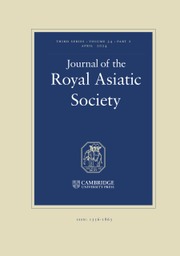Article contents
A group of Arabic–Latin translators working in northern Spain in the mid-12th century1
Published online by Cambridge University Press: 15 March 2011
Extract
In his classic study of the transmission of Arabic science into Latin, which contributed so much to our knowledge of the “Renaissance” of the 12th century, Charles Homer Haskins was the first scholar to bring into clear focus the morass of bibliographical information given by Wüstenfeld and Steinschneider, and he was able to define, on the basis of fresh investigation of the manuscript material, the activity and personalities of individual translators. The bulk of his evidence rested on the translators' prefaces, which give some or all of the following information: the title and author of the Arabic original, the Latin translator, the dedicatee, and other works by the same translator, whether contemplated or already finished. Such information provides a very useful framework for assessing the œuvre of a particular translator. However, the edition and investigation of the texts themselves have yielded a certain amount of new information and, although Haskins's work has by no means been superseded, we are now in a position to clarify certain points and add to his conclusions.
- Type
- Articles
- Information
- Copyright
- Copyright © The Royal Asiatic Society 1977
References
page 79 note 1 The force of the argument depends on the use of the word astronomia and its derivatives to cover both astronomy and astrology in their modern sense.
page 79 note 2 i.e. the quadrivium, consisting of arithmetic, geometry, music, and astronomy, in that order (see also p. 82 below).
page 83 note 1 The reference here is perhaps to the Platonists (cf. Timaeus, 38C) and the medici, respectively.
page 91 note 1 On f. 64v of MS B ‘Umar's work is described, more correctly, as containing 138 chapters.
- 2
- Cited by


